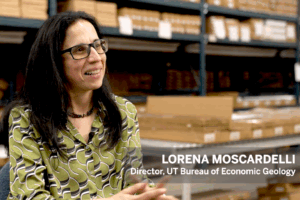AUSTIN, Texas — What began as an effort to better understand how animal and human visual systems work has led to a revolutionary method for enlarging and enhancing photos that is being made available, free of charge, from the Center for Perceptual Systems at The University of Texas at Austin.
Wilson Geisler, center director and professor in the Department of Psychology, said that the free image-processing website allows users to upload as many as 1,000 images daily. The site provides tools to “de-noise” images such as removing imperfections resulting from low light conditions and allows users to enlarge images without losing picture quality.
Geisler developed the tools with researcher Jeff Perry of the Center for Perceptual Systems.
“This is a good example of how basic research leads to a practical application,” said Geisler. “Our eyes evolved to process natural signals, so to understand how the visual brain works, we measured the real signals in the natural world the environment in which the brain is operating. In the process we realized that many tasks the eye performs are the same as what photography requires.”
Unlike other photo enhancement tools, which work on an image-by-image basis, Geisler’s approach called “image processing with natural scene statistics” is based on the analysis of thousands of images. Geisler and his team measured the statistical properties of those images and created an algorithm that determines what is or is not “noise” in any given photograph.
Geisler said the algorithm makes corrections based on what it has “learned” from examining so many images.
In addition to improving our everyday photographs, the technology will have applications for enlarging and enhancing everything from archival photos to satellite images. Geisler said those working with especially large images will benefit from the speed of his service.
“Compared with other photo-enhancement algorithms, we believe this is the best in the world for reducing noise and enlarging images, and also about 50 times faster,” he said.
The site is easy to use. After agreeing to terms of service, users can immediately begin uploading photos and enhancing them in either “standard” or “expert” modes. More technical information on how the tools were developed can be found at:



